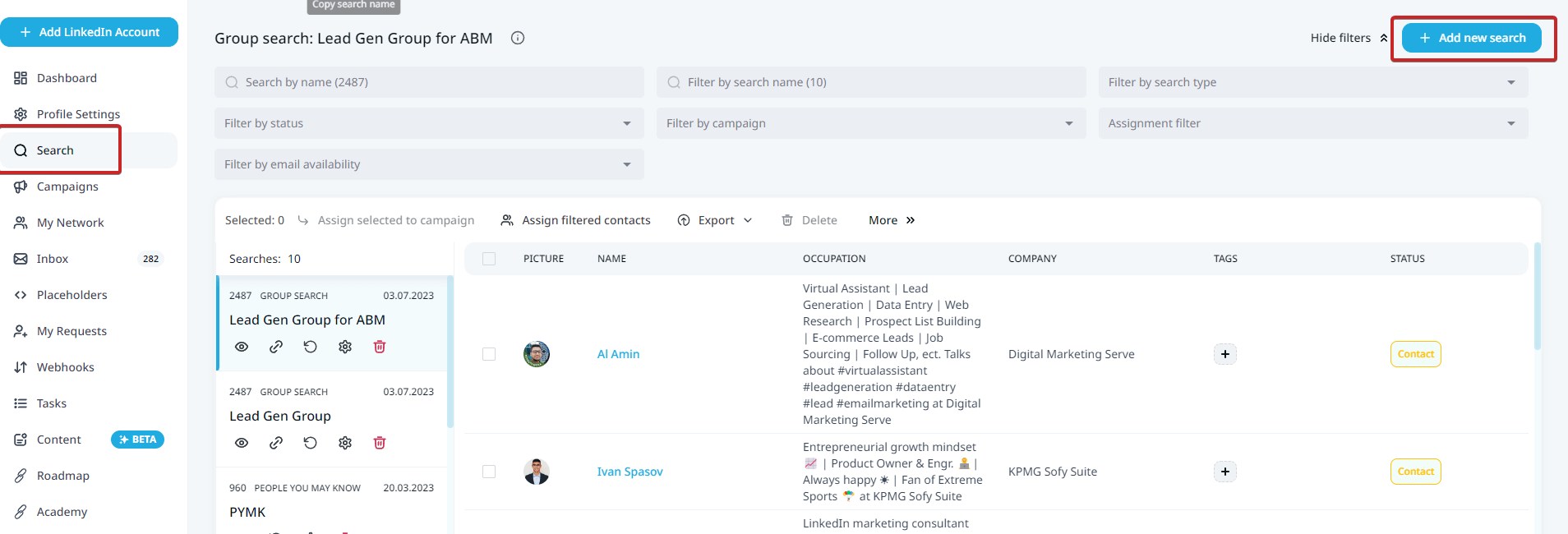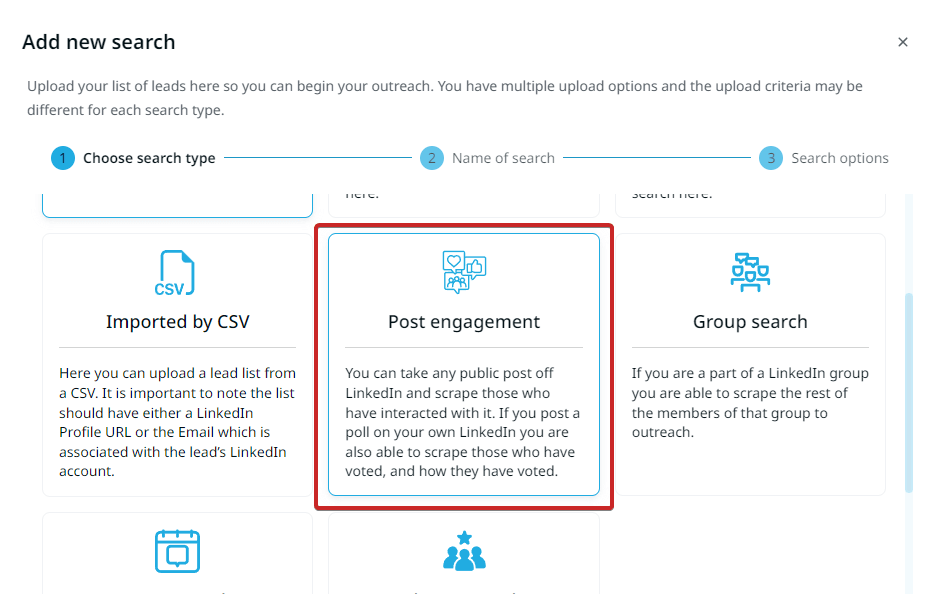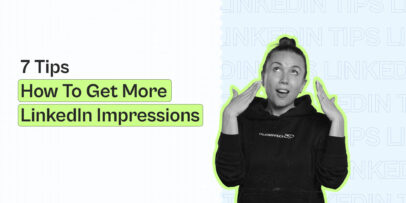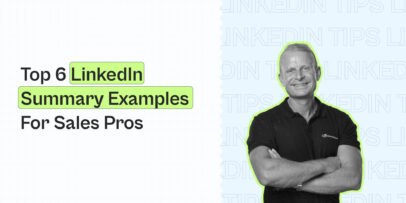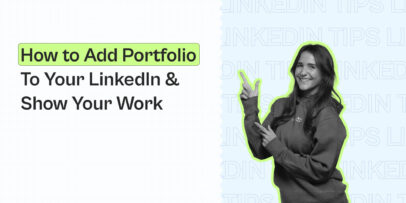Content Marketing On Linkedin: 5 Simple Actions To Be Successful
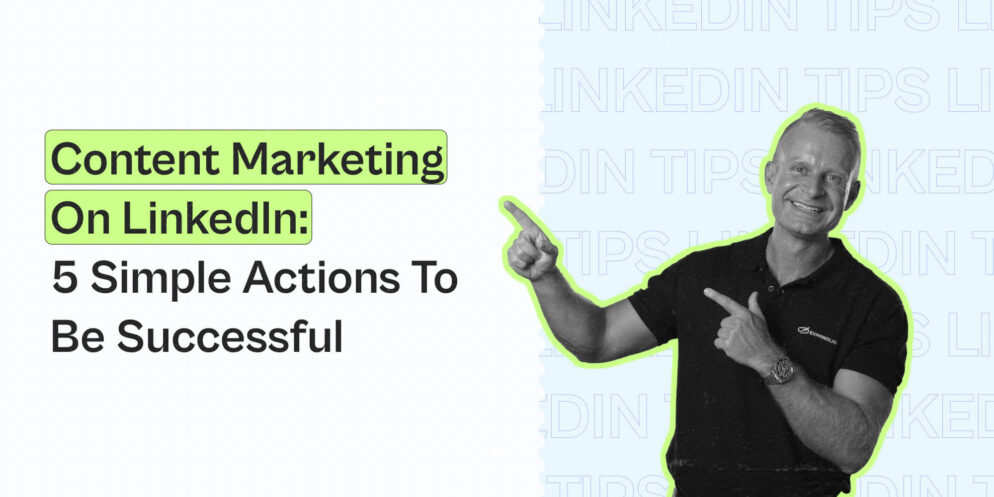
Doing content marketing on LinkedIn is easy.
That’s right.
Whether you want to generate more leads, grow your network, book more meetings, and so on – you just need the right strategy.
It might seem overwhelming at first…
You might be thinking:
- What should I post?
- How do I get leads from content?
- How will this help my brand?
If that’s the case, don’t worry.
What you need is the right LinkedIn content marketing strategy to really be successful on the platform.
And by the end of this guide, you’ll know:
- Why you should be using LinkedIn for your B2B content marketing
- 7 Biggest benefits of LinkedIn content marketing
- 5 Main steps to build out your LinkedIn content marketing strategy (with examples)
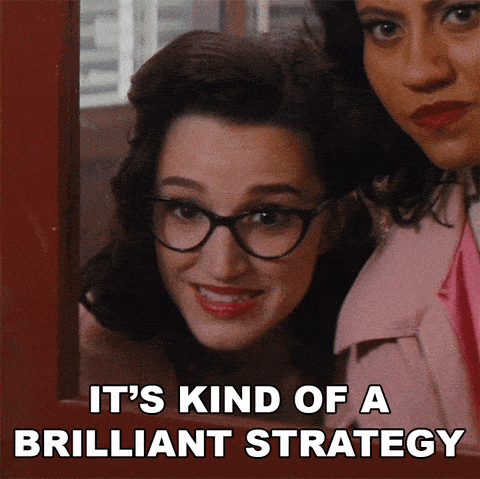
Doing content marketing on LinkedIn?
Then you’ll also want to join our free group called The LinkedIn Outreach Family. In it, we and other LinkedIn experts are constantly posting behind-the-scenes content on LinkedIn marketing, outreach, content, and more.
Why Use LinkedIn For B2B Content Marketing?
First things first, why use LinkedIn for content marketing in the first place?
Over at Expandi, we’re huge fans of LinkedIn outreach.
But even if you’re doing a lot of automated outreach, it’s still a good idea to incorporate LinkedIn content marketing as part of your social selling to build trust with your audience.
Imagine you connected with someone on LinkedIn and they’re curious to learn more about what you do.
So, they go back to your profile.
What do you think will be more effective in turning that lead into a client?
- An empty, optimized LinkedIn profile.
- Or an optimized LinkedIn profile with a ton of content that inspires trust and expertise.
Obviously, the answer is the second option.

Building a personal brand on LinkedIn also can directly improve your connection acceptance rates.
If someone sees you’re getting a lot of engagement and you’re posting a lot of helpful content for your target audience, they’re more likely to engage with you.
This is also important if you’re doing LinkedIn account-based marketing (ABM).
In short: By providing valuable content, people are more likely to ask you for help.
Why use LinkedIn for content marketing?
To put things into context, let’s take a look at some important numbers that show LinkedIn and content go hand-in-hand.
Did you know that:
- For B2B brands doing content marketing on LinkedIn, the platform is responsible for 97% of a business’s social media leads?
- More than 55% of decision-makers use LinkedIn content to vet organizations and decide which brands to work with?
- LinkedIn makes up for more than 50% of all social traffic for B2B websites and blogs?
In short: If you work in the B2B world, regardless of your niche, it’s very likely that your target audience is on LinkedIn.
With your content strategy, you draw your ideal clients to come to you through their buyer’s journey.
Here’s why this matters.

7 Biggest Benefits Of Doing Content Marketing On LinkedIn
Of course, the main goal of doing content marketing on LinkedIn is to attract potential buyers.
So, when doing any kind of content marketing you should be creating tailor-made content with them in mind. In other words, you’re creating content for a specific group of people, not “everyone”.
Here are some of the biggest benefits you gain when doing B2B LinkedIn content marketing:
- Exposure to LinkedIn’s massive user base (over 930 million members).
- Reaching decision-makers (that’s over 65 million people).
- Expanding your reach. The more people you’re connected with, the more people are likely to engage with your content. This, in turn, boosts your reach on the platform because of how the algorithm works.
- Increased networking opportunities with the right people.
- Boost in traffic to your website as more people go from your content to your website to learn more about you.
- Provides a clear way to become a thought leader and position yourself as an expert.
- Bigger brand awareness and visibility. Who do you think your target audience will trust more: a brand sharing a lot of valuable guides for free or their competitors who aren’t even on LinkedIn?
But of course, for all this to happen, you need to be following the right LinkedIn content marketing strategy.
Though, before you start creating content on LinkedIn, you’ll want to optimize your profile first.
So, be sure to see our guide on improving your LinkedIn profile.
Now, let’s now take a look at how to create a strategy for your brand from scratch.
How to Build a LinkedIn Content Marketing Strategy: 5 Steps To Get Started (With Examples)
How do you create a content marketing plan using LinkedIn?
The difference between writing blindly and with a strategy is vision.
In other words, you’re writing with a purpose (help your target audience, generate leads, grow your network, etc.) instead of writing for “everyone” (for random likes and comments).
When it comes down to it, your LinkedIn content strategy will mainly be based on:
- Your target audience.
- Marketing goals.
- And the kind of value you’re providing.
Of course, frameworks, templates, and other content examples help a lot too.
But let’s keep things actionable here so that you can follow along and have a usable content marketing strategy by the end of this guide.
Step 1. Defining your target audience for your content strategy
If your target audience is “everyone”, you might be off to a bad start.
If you provide a service, who are you helping with what?
Let’s take a look at another LinkedIn content marketing example.
Expandi helps marketers, sales teams, agency owners, and other audiences automate their LinkedIn outreach.
As such, a lot of our LinkedIn content is based around:
- Posting outreach content.
- Proven templates.
- How-to guides.
- And more.

Multichannel outreach might not resonate with some people (e.g. inbound marketers).
But that’s fine!
Because, in most cases, it’s people who are already doing outreach that use Expandi.
When writing for a specific audience, be sure to define:
- Their company role and seniority.
- Their industry.
- Their skill level.
- Their pain points and needs.
- Company size.
- And more.
Then, once you start posting content on LinkedIn, take a look at who’s viewing your profile and engaging with your posts.

See our article on ideal customer profile vs buyer persona if you need more help with this step.
Step 2. Set clear goals for your LinkedIn content strategy
A good strategy is based on clear goals.
Otherwise, you can’t measure your progress or determine whether your efforts are successful.
Different LinkedIn strategy goals may include:
- Connecting with sales prospects.
- Booking more meetings.
- Building your brand awareness.
- Expanding your contacts or reach.
- And more.
Depending on which goals you’re after, you’ll create different content accordingly.
For example, if you want to book more sales meetings or connect with leads you should be posting more:
- Case studies.
- Social proof and testimonials.
- And other content that demonstrates why you provide the ideal solution to your audience’s problems.
Step 3. Outline your LinkedIn content strategy
A large part of your content marketing strategy is knowing what to post and when.
Now, this will be different for everyone.
But generally speaking, your content needs to be about:
- What you like writing about and have expertise in.
- What your audience likes reading about.
This will overlap your brand identity and solution with what problems your audience has.
For example, if you’re targeting sales teams, you’ll probably be posting content about:
- Creating outreach campaigns.
- Proven templates and scripts.
- Getting the most out of LinkedIn.
- And more.
Then, what you’ll be posting will depend on your objectives (see previous step).
As a potential starting point, consider outlining your strategy into the 3 following types of posts:
- Expertise content – Posts that show your expertise, position yourself as a thought leader, and show your leads that you know what you’re talking about.
- Engagement content – These posts won’t get you new clients, but they’ll increase your reach to new audiences. Focus on maximizing your reach here, as well as likes and comments. On LinkedIn, the way the algorithm works is that the more people engage with your posts within the first few minutes, the higher the reach will be.
- Product, offer, and self-promotional content – These posts will be your bottom-funnel content. Here, you’ll be creating content based on your solution and the main problem you solve. Focus on case studies, social proof, and other content that demonstrates why you’re better than your competitors. Post this kind of content the least, otherwise your audience might think you’re overly self-promotional.
Step 4. Start creating meaningful content
What IS meaningful content?
To write well, you need to think a lot about your target audience and your topics.
Make sure you:
- Define your readers based on your marketing persona and the language they use.
- Explain your topic simply.
- Engage your readers with hooks they can’t ignore.
- Engineer a logical structure.
- Earn your reader’s trust based on your knowledge.
Formatting and making your content easy to read matters a lot here as well.
Check out our guide to formatting LinkedIn text posts for more info on that.

Step 5. Don’t forget outreach
This is probably the most important step if you want to grow and generate leads fast.
Creating content is a great way to get started on LinkedIn.
But it’s hard to grow if not many people are seeing your posts in the first place.
So, you’ll want to connect with people who might gain value from your posts or engage with it to boost your reach.
Essentially, as you post more content, you’ll have more opportunities to use automation to engage and start conversations on autopilot.
For more info on this, consider reading our LinkedIn X-ray search guide.
As a rule of thumb, you’ll also want to always engage with people who’ve engaged with your post.
For example, if your post goes viral, you’ll probably want to reach out to everyone who engaged with your post.
After all, so many of them are going to fit your ideal customer persona.
Here’s another LinkedIn content marketing example that fits the above scenario.

How do we automatically reach out to 3,000+ people who commented on the post?
Easy! We use Expandi to scrape the people who engaged with the post.
- Grab a free, 7-day Expandi trial.
- Copy the post URL.
- Go to Search in Expandi and add new search.
- Select post engagement.
- Enter search name and paste the post URL.
From there, Expandi will give you the full list of people who engaged with the post.
Then, you can:
- Export the list as a spreadsheet file.
- Disqualify people who don’t fit your ideal customer persona.
- Filter based on company role and industry.
- Use Expandi filters to search by name, status, activity, and more.
- Automatically reach out to relevant people whom you can help.
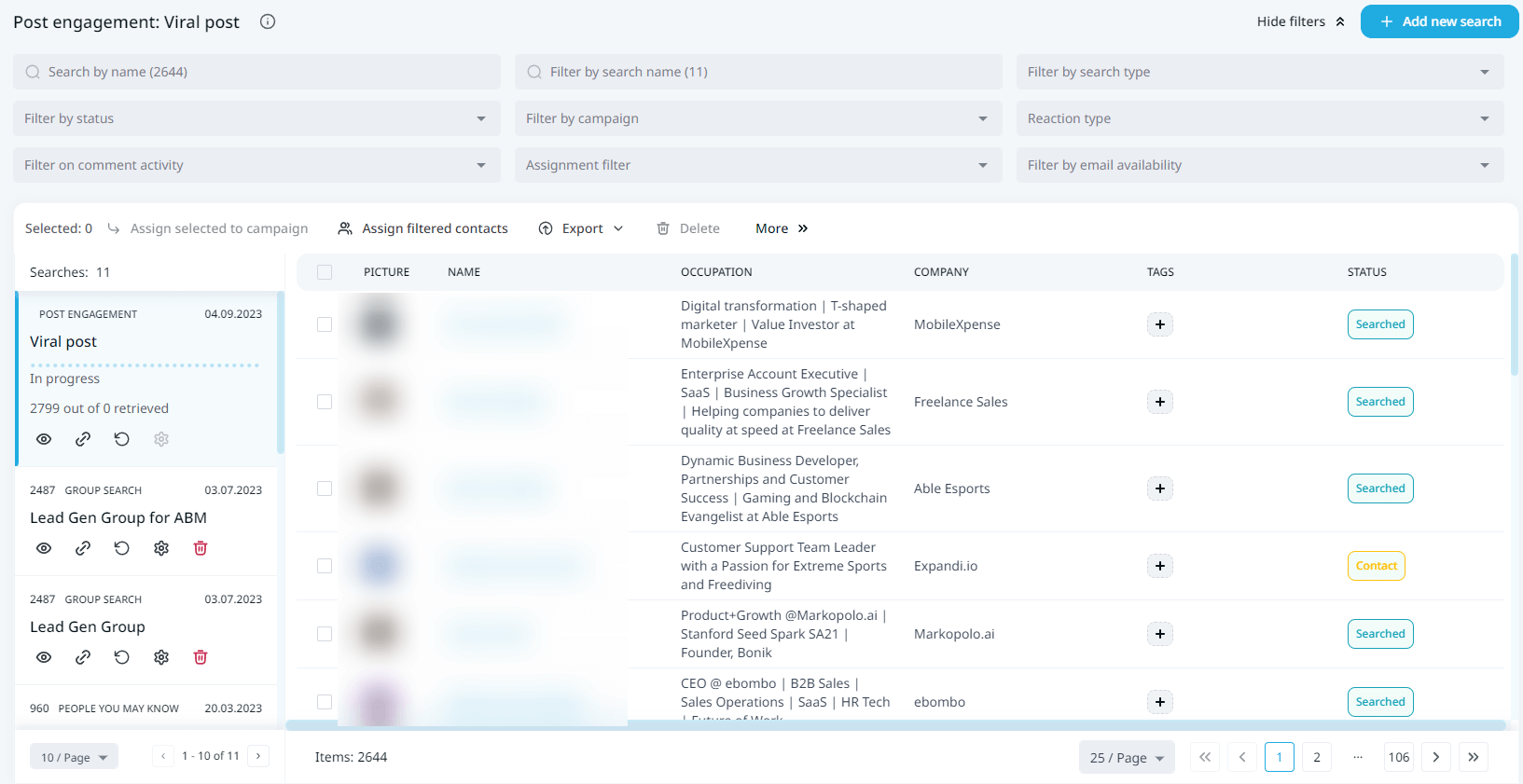
Not bad, right?
Wondering how to reach them and book meetings on autopilot from here?
See our full guide on content retargeting strategy for the proven templates we use that got us a 72% acceptance rate and a more detailed breakdown.
You can also use this strategy to scrape other people’s posts.
Because this makes personalization much easier (e.g. “saw you liked Stefan’s post about multichannel outreach!”), you’re also more likely to have a higher acceptance rate.
Where To Go From Here
So, hopefully, you learned a thing or two about LinkedIn content marketing by now.
To recap, you’ll need to:
- Define your ideal target audience for your content strategy.
- Sear clear, measurable goals.
- Outline your strategy and define content types.
- Start creating meaningful, valuable content for your readers.
- Reach out to potential leads who engaged with your content.
For the last step, be sure to grab the free, 7-day Expandi trial to automate your outreach and lead generation!
Only the best strategies will bring the best results
New articles straight to your inbox

